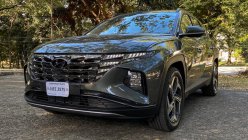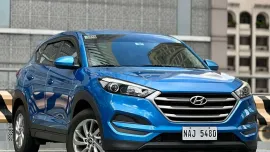In this article...
- Introduction
- Exterior
- Interior
- Safety
- Engine
- Price
- Conclusion
2024 Honda CR-V vs Hyundai Tucson: Gasoline hybrid vs diesel match-up.
Honda Cars Philippines Inc. (HCPI) officially launched the all-new 2024 CR-V last September 2023. This strengthened the brand’s position in the local mid-size crossover SUV market because the new model gets plenty of improvements both inside and out. It also lost its diesel engine and has gained a five-seater hybrid version.
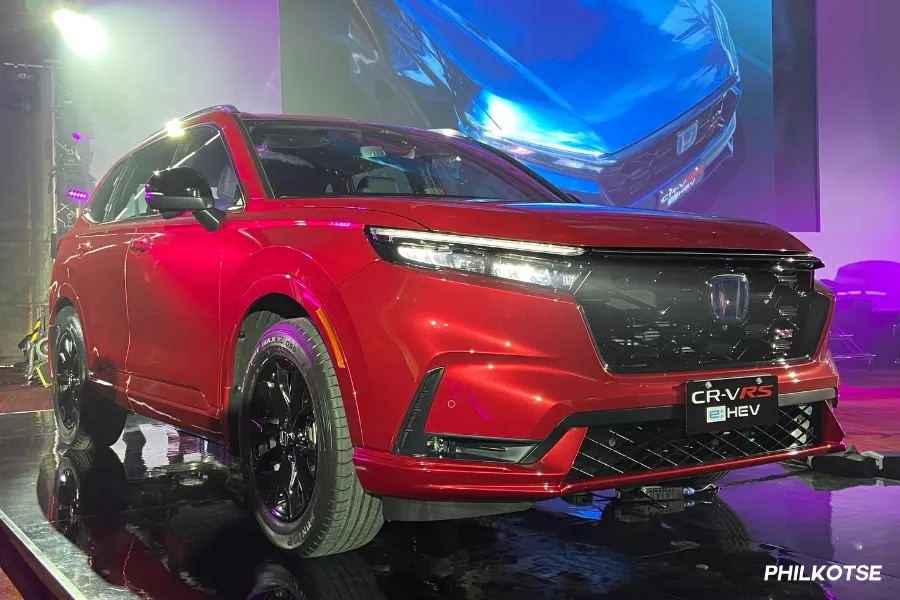
Honda CR-V RS e:HEV
Hyundai meanwhile, introduced the Tucson crossover SUV back in August 2022. This coincided with the brand’s local relaunch last June 2022. It remains a five-seater with a diesel engine option.
Of note, the two crossovers are vastly different. Regardless, the CR-V RS e:Hybrid Electric Vehicle (HEV) five-seater may overlap with the target audience of the Tucson despite the gap in their pricing. For your reference, the Tucson GLS+ equipped with a diesel engine retails at Php 1,840,000 while the CR-V RS Hybrid with gasoline power unit is priced at Php 2,590,000.
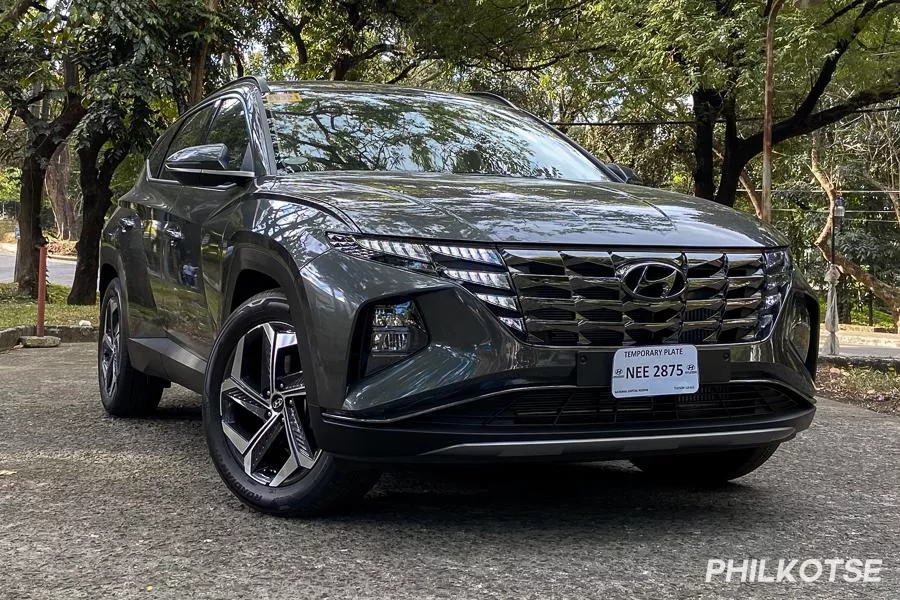
Hyundai Tucson GLS+
So this begs the question, which one is the better five-seater crossover SUV? To find out, let’s compare the Tucson GLS+ against the CR-V RS e:HEV.
2024 Honda CR-V vs Hyundai Tucson: Exterior
To begin, let’s compare their sizes. The Honda CR-V is 4,691mm long, 1,866mm wide, and 1,681mm in height. It also has a wheelbase spanning 2,701mm, as well as a ground clearance of 198mm.
The Hyundai Tucson meanwhile, is 4,630mm long, 1,865mm wide, and 1,665mm in height. Its wheelbase is 2,755mm long, and its ground clearance stands at 181mm.
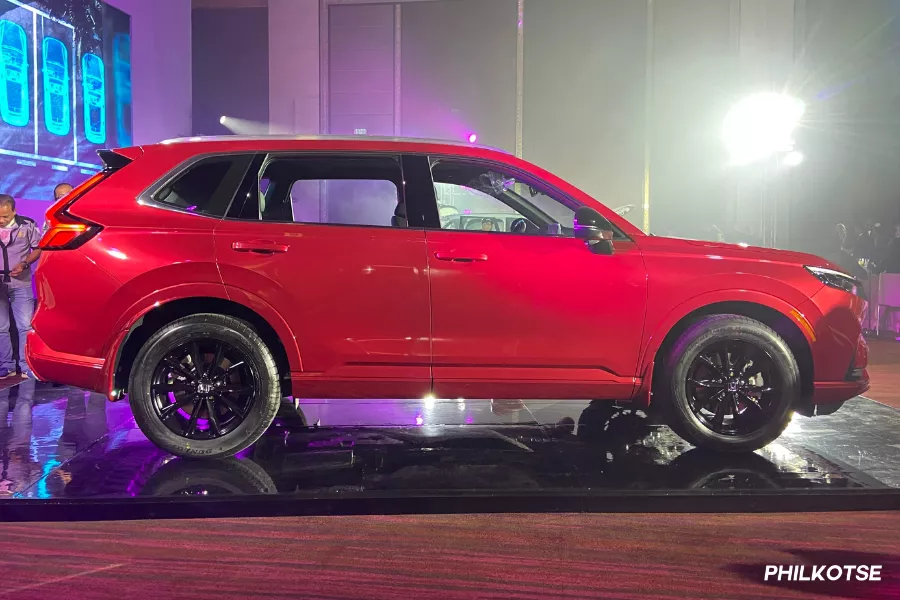
Honda CR-V RS e:HEV from the side
The all-new Honda model is a fair bit larger compared to the Hyundai. It also has more ground clearance, but the Tucson has more in the way of wheelbase length. Dimensions are important to know because they give a buyer an idea of just how large the vehicle is. It might even provide hints as to how roomy their interiors are.
| Honda CR-V RS e:HEV | Dimensions | Hyundai Tucson GLS+ CRDi |
| 4,691mm | Length | 4,630mm |
| 1,866mm | Width | 1,865mm |
| 1,681mm | Height | 1,665mm |
| 2,701mm | Wheelbase | 2,755mm |
| 198mm | Ground clearance | 181mm |
Concerning exterior equipment, both models come standard with automatic LED headlamps, LED daytime running lamps (DRL), and LED taillights. Both also have power-folding side mirrors, a roof-mounted rear spoiler, and roof rails.
Found on the CR-V RS Hybrid but not present on the Hyundai Tucson are a pair of front fog lamps. On the flipside, the Hyundai Tucson does have a unique-looking lighting setup where its DRLs are seamlessly integrated into its grille.
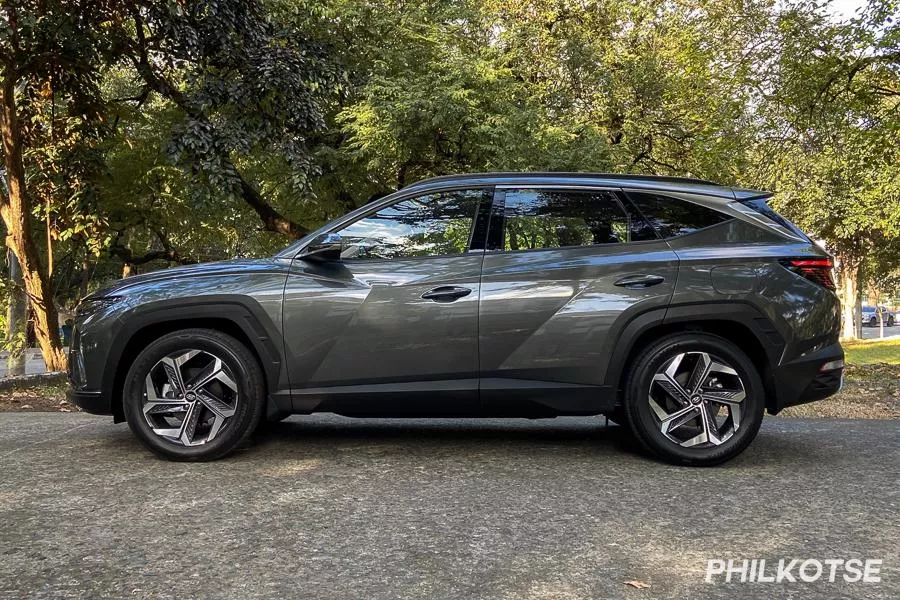
Hyundai Tucson GLS+ plus from the side
For wheels, the CR-V RS Hybrid uses a set of 18-inch alloys while the Tucson gets a larger set that measures 19 inches.
Lastly for the exterior, both crossovers come with power tailgates. But Honda does one up the Hyundai again thanks to its panoramic sunroof and its rain-sensing wipers.
| Honda CR-V RS e:HEV | Exterior Equipment | Hyundai Tucson GLS+ CRDi |
| LED | Headlights | LED |
| With | Daytime Running Lamps | With |
| LED | Taillights | LED |
| 18-inch | Wheel size | 19-inch |
| Alloy | Wheel type | Alloy |
| With | Rear spoiler | With |
| With | Roof rails | With |
| With | Sunroof | None |
2024 Honda CR-V vs Hyundai Tucson: Interior
As established during the introduction, both the CR-V RS Hybrid and the Tucson can comfortably seat up to five occupants. Both have leather-clad seats, plenty of soft-touch surfaces, clean well-arranged cockpits, and a 60:40 split-folding rear seat.
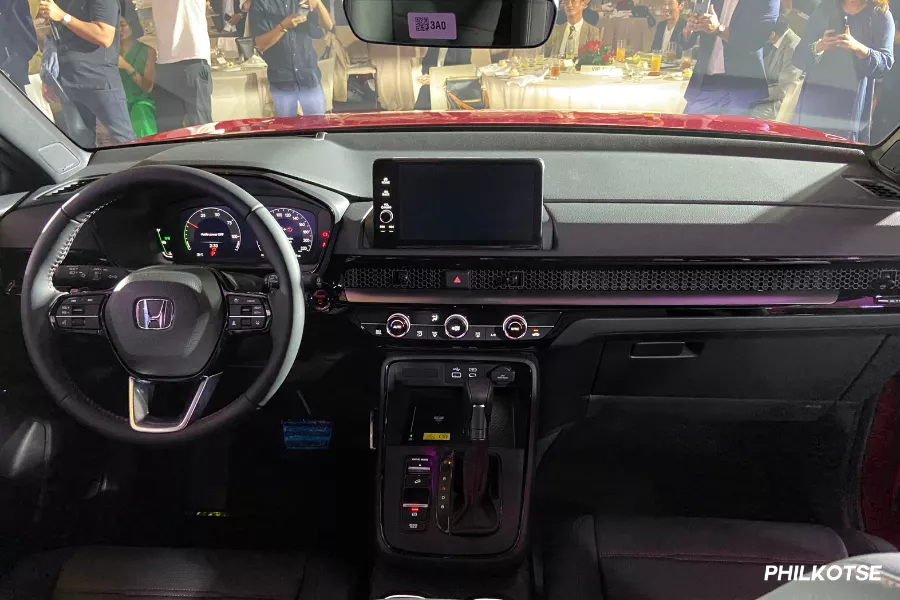
Inside the CR-V RS e:HEV
Keeping their occupants cool are automatic climate control systems with rear vents. Both likewise feature plenty of cup holders and cubby holes for storage. Also present for both models are 12-volt accessory outlets and rear USB charging ports.
Both vehicles are equipped with fully digital gauge clusters, as well as paddle shifters, a push-to-start button, and a tilt and telescopic steering column. Finding one’s preferred driving position on both the Honda and Hyundai crossovers is also easy thanks to their electronically adjustable front seats. Both of their driver’s seats even get power lumbar support.
| Honda CR-V RS e:HEV | Interior | Hyundai Tucson GLS+ CRDi |
| Leather | Seat material | Leather |
| Electronic | Driver’s seat adjustment | Electronic |
| Automatic dual-zone w/ rear vents | Air-conditioning type | Automatic w/rear vents |
| Push button | Ignition | Push button |
| 5 | Seating Capacity | 5 |
| With | Rain-sensing wipers | None |
What the Honda CR-V gets that the Hyundai Tucson does not is a heads-up display, woodgrain accents, contrast red stitching, and sporty aluminum pedals. Both do get ambient lighting.
As a side note, the other CR-V trims, namely the V Turbo and the VX Turbo are seven-seater models. The Tucson meanwhile, is exclusively a five-seater.
For on-board entertainment, the Honda gets a nine-inch touchscreen display with wireless Android Auto and Apple CarPlay. It also gets wireless smartphone charging and is linked to a 12-piece Bose Sound System.
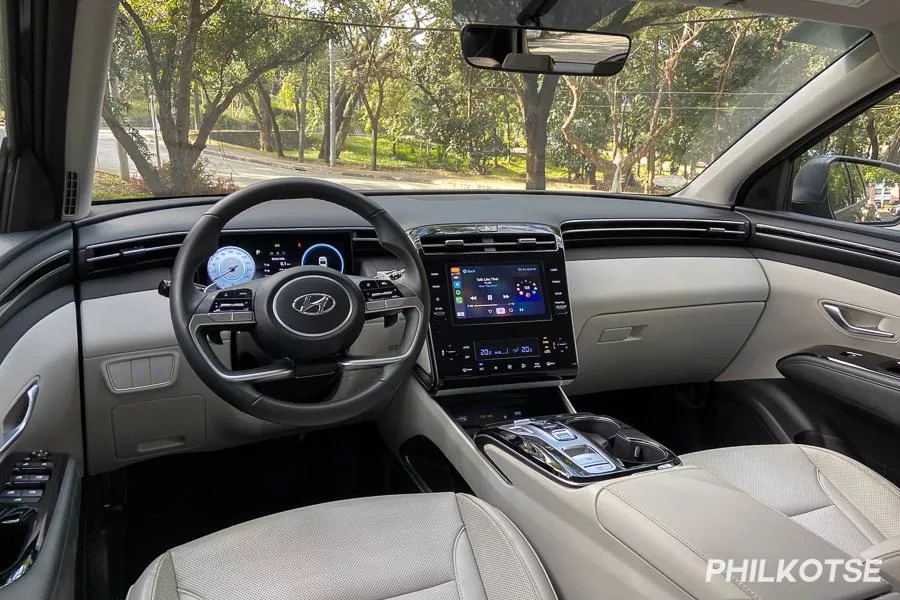
Inside the Tucson GLS+
The Tucson, on the other hand, is equipped with a smaller eight-inch touchscreen display that features wireless Apple CarPlay and Android Auto. The screen is linked to a six-piece speaker system, and it also has wireless smartphone charging.
With that said, the onboard entertainment system on the CR-V RS Hybrid is relatively better specced compared to the one on the Tucson. Its larger screen might be more legible, and its premium speaker set might produce better sound quality. Note though that both these screens on the CR-V and Tucson allow their users to ditch annoying wires thanks to their wireless smartphone linking software.
| Honda CR-V RS e:HEV | On-board tech | Hyundai Tucson GLS+ CRDi |
| 9-inch touchscreen | Infotainment system | 8-inch touchscreen |
| Wireless Apple CarPlay and Android Auto | Connectivity options | Wireless Apple CarPlay and Android Auto |
| 12-piece Bost sound system | # of speakers | 6-piece speaker system |
| Digital | Guage cluster | Digital |
| With | Ambient lighting | With |
| With | Wireless charging | With |
For the driver, the Honda gets a 10.2-inch TFT digital instrument cluster which is slightly smaller compared to the Tucson’s 10.25-inch TFT digital instrument display.
2024 Honda CR-V vs Hyundai Tucson: Safety
When it comes to safety, both crossovers come with what you’d expect from a modern vehicle. Both have anti-lock braking with electronic brakeforce distribution, stability control, rear parking sensors, hill-start assist, hill-descent control, and a total of six airbags each.
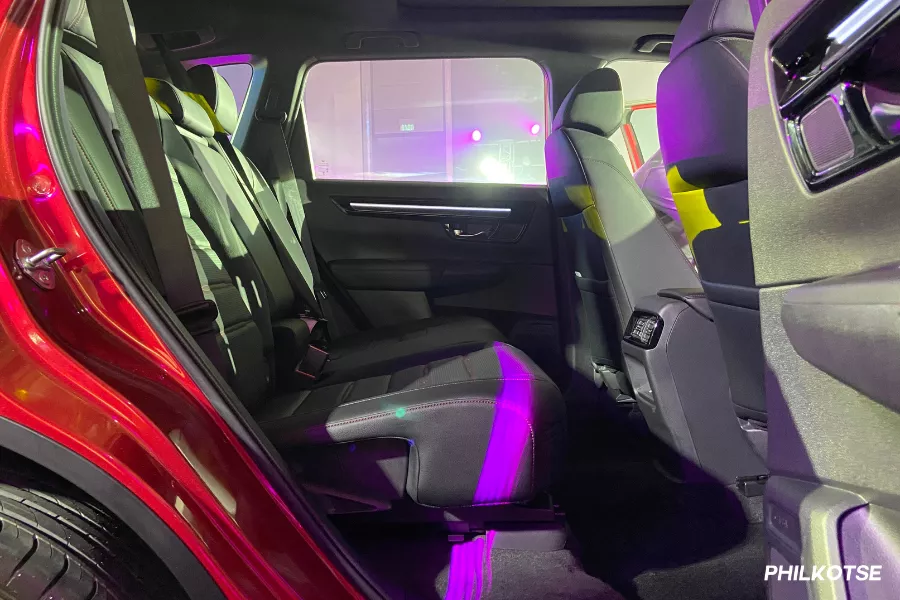
CR-V's rear seats
Concerning advanced safety features, however, the CR-V gets an advantage over the Tucson thanks to its Honda Sensing suite. This collection of technologies includes collision mitigation braking, forward collision warning, lane keep assist, road departure mitigation, lane departure warning, and automatic high beams, among others.
All of those advanced safety features are not present in the Hyundai model. Both cars do come with cruise control systems, but the CR-V has adaptive cruise control, while the Tucson has standard cruise control.
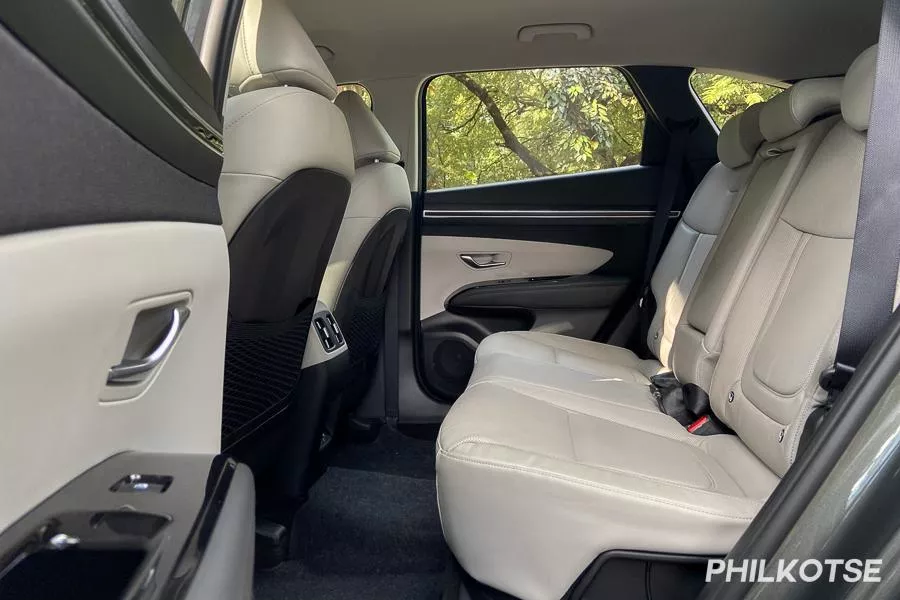
Tucson rear seats
The Tucson does come with a trailer stability assist which helps stave away trailer swing when there is an accident. It also helps the driver in keeping the vehicle steady when experiencing loss-of-traction events when pulling a trailer. It likewise comes with a tire pressure monitoring device which is not available on the Honda model.
| Honda CR-V RS e:HEV | Safety Equipment | Hyundai Tucson GLS+ CRDi |
| 6 | No. Of Airbags | 6 |
| With | Anti-lock braking | With |
| With | Stability control | With |
| With | Hill-start assist | With |
| With | Reverse Camera | With |
| With | Rear sensors | With |
| With | Engine Immobilizer | With |
| With | Hill-start assist | With |
| Adaptive | Cruise Control | Standard |
| With | ISOFIX | With |
| With | Hill-descent control | With |
| None | Trailer assist | With |
| With | Emergency braking | None |
| With | Lane keep assist | None |
| With | Lane departure warning | None |
| None | Tire pressure monitoring | With |
2024 Honda CR-V vs Hyundai Tucson: Engine
Propelling the Honda CR-V RS e:HEV is a 2.0-liter inline-4 VTEC gasoline mill paired with two electric motors and a lithium-ion battery. Alone, this gasoline engine can generate 145 horsepower and 183 Nm of torque.
The dual motors then add 181 horsepower and 335 Nm of torque to its output. During its launch, HCPI said that the CR-V hybrid can make a combined power output of 204 hp.
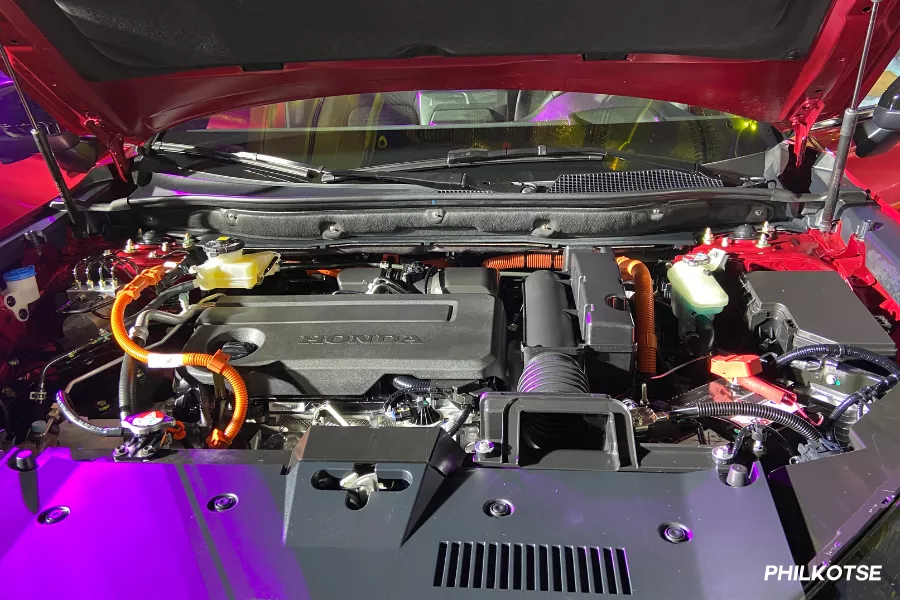
The CR-V RS e:HEV's 2.0-liter VTEC hybrid mill
Power for the CR-V hybrid is then sent to its front wheels via an electronic continuously variable transmission (E-CVT).
The Tucson GLS+ meanwhile, uses the Smartstream D2.0 CRDi (turbodiesel) engine. At the most, it can put out a total of 183 horsepower and 416 Nm of torque. Power aboard this model is managed by an eight-speed automatic gearbox sending power to its front wheels.
At a glance, the CR-V hybrid clearly has a bit more horsepower compared to the Hyundai Tucson. But with the latter being a diesel, it does offer a significant amount of torque making it potentially better at hauling cargo.
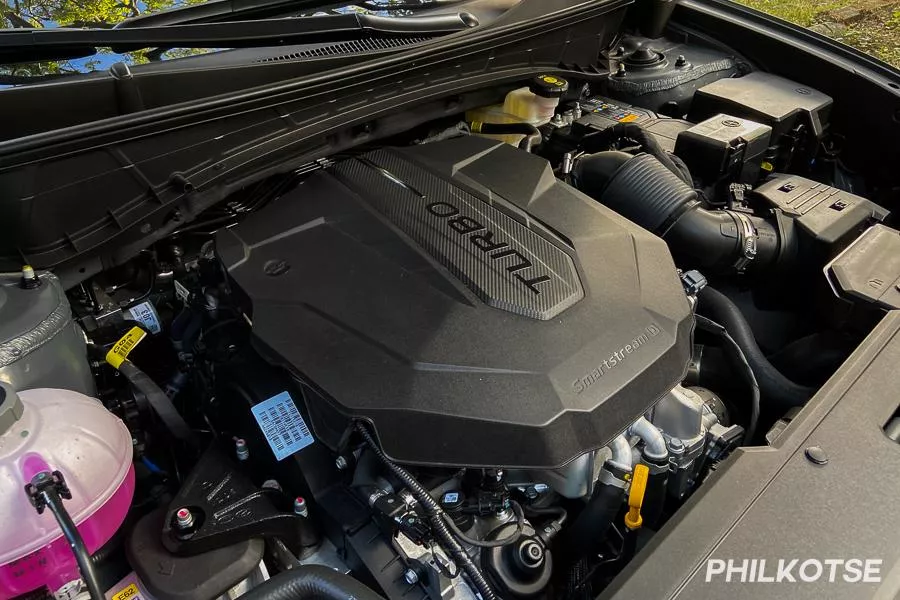
Tucson's 2.0-liter CRDi (turbodiesel) four-banger
One strength of the Honda though, is its EV drive mode, which allows it to run on battery power alone. Arguably, this might make the CR-V hybrid better in terms of fuel efficiency and being environmentally friendly.
For braking, both vehicles use disc brakes for all four wheels and an electronic parking brake with auto-hold. Both also use a MacPherson strut front suspension and a multi-link rear suspension.
| Honda CR-V RS e:HEV | Powertrain and performance | Hyundai Tucson GLS+ CRDi |
| 2.0-liter inline-4 gasoline dual-motor hybrid | Engine | 2.0-liter turbodiesel |
| E-CVT | Transmission | 8-speed automatic |
| 145 hp | Horsepower (Combustion engine only) | 183 hp |
| 183 Nm | Torque (combustion engine only) | 416 Nm |
| 181 hp | Horsepower (Hybrid system) | N/A |
| 335 Nm | Torque (Hybrid system) | N/A |
2024 Honda CR-V vs Hyundai Tucson: Price
| 2024 Honda CR-V Variants | Price |
| CR-V V Turbo | Php 2,100,000 |
| CR-V VX Turbo AWD | Php 2,280,000 |
| CR-V RS e:HEV (hybrid) | Php 2,590,000 |
| 2023 Hyundai Tucson Variants | Price |
| Tucson GLS (Gasoline) | Php 1,570,000 |
| Tucson GLS+ (Diesel) | Php 1,840,000 |
2024 Honda CR-V vs Hyundai Tucson: Conclusion
With the Honda CR-V hybrid being a whopping Php 750,000 more expensive than the Tucson GLS+, it comes as no surprise that it offers more features.
In summary, the most obvious equipment present on the CR-V that’s not available on the Tucson is a more robust safety feature, a hybrid powertrain with an EV mode, a sunroof, rain-sensing wipers, and a heads-up display, among others.
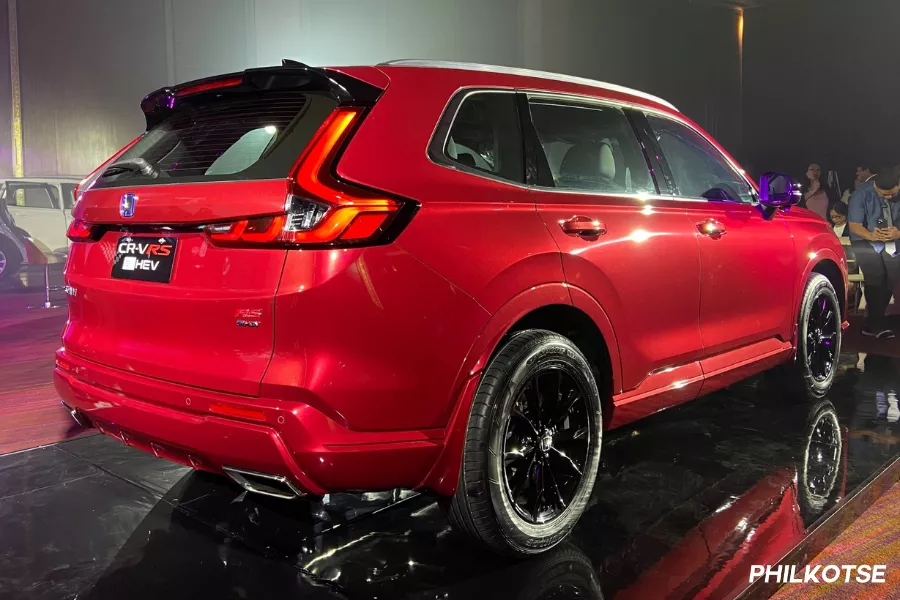
CR-V RS e:HEV from the rear
This results in the CR-V as a clear winner in terms of sheer number of features alone. But at the same time, you get what you pay for since it is heaps more expensive than the Hyundai alternative.
What the Hyundai Tucson has going for it is the appeal of diesel engines. Traditionally, these are more sought after in the Philippine market as evidenced by the number of turbodiesel pickup trucks and SUVs roaming our streets. And of course, it is notably more affordable than the CR-V and some might be able to ignore what the Honda offers in terms of safety and comfort if what they're after in the end is a diesel-powered five-seater crossover SUV.
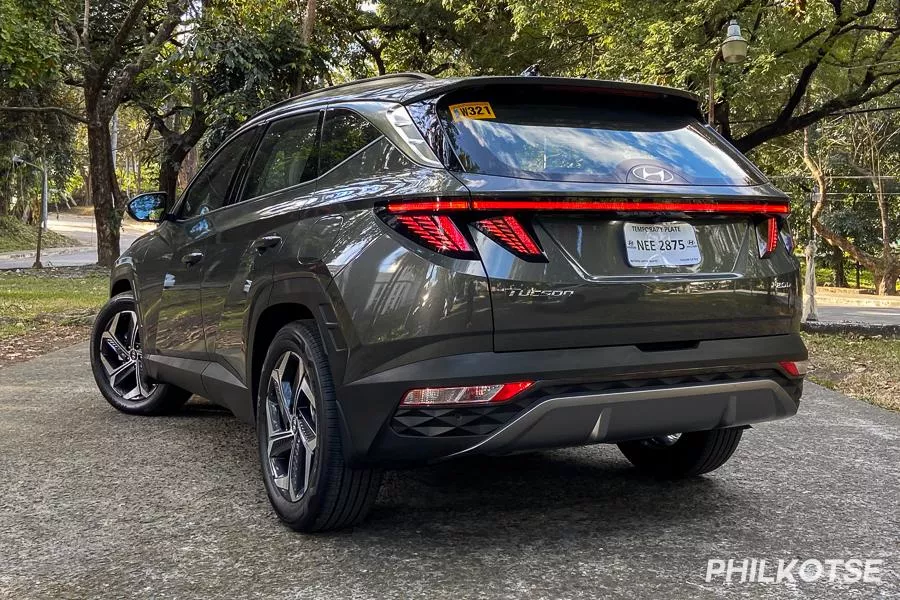
Hyundai Tucson GLS+ from the rear
Do take each vehicle for a test drive though, as this comparison is merely a guide for buyers. That way, you can form a more concrete feel for both cars and thus make a more informed final pick.
Catch more comparison articles like this here on Philkotse.
Recent posts
- All-new Honda CR-V test drive sm mall of asia Sep 18, 2023
- 2024 Honda CR-V fuel efficiency Sep 14, 2023
- Honda CR-V Old vs New Sep 13, 2023
- 2023 Hyundai Tucson GLS+ Diesel Review Mar 15, 2023
- hyundai tucson toyota rav4 what car reliability survey Nov 30, 2022



![[Auto brawl 101] Honda Jazz vs Mazda 2: Which is the better subcompact in the Philippines?](https://img.philkotse.com/crop/94x52/2018/09/19/3vWWA7rJ/jazzvsmazda2-9181.jpg)


